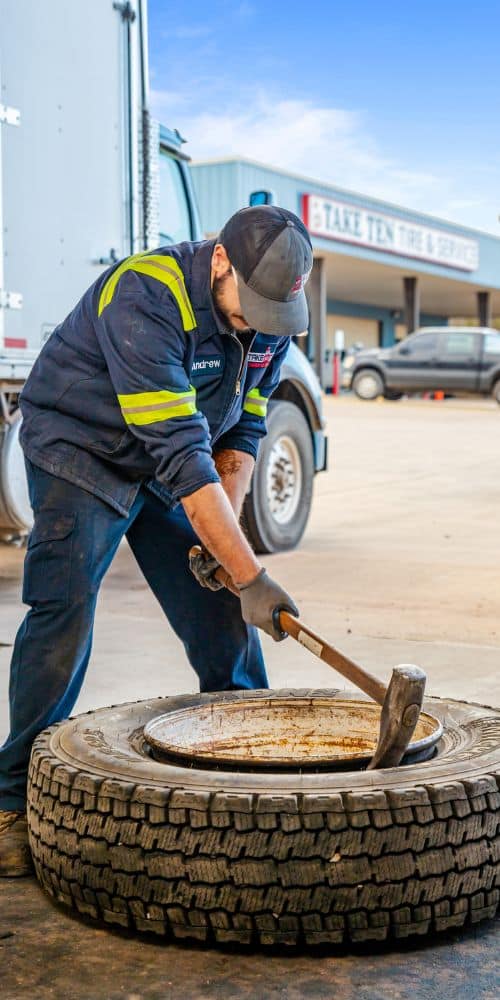Tire Fixing Myths Debunked: Dividing Fact From Fiction
In the realm of auto maintenance, tire repair service holds a substantial place, yet it is usually shrouded in misconceptions and misconceptions that can lead to confusion for lorry proprietors (tire shop near me). From the misconceptions bordering patching versus connecting a punctured tire to the efficiency of various tire sealants, there are a number of key areas where clearness is needed to make informed choices.
Typical Tire Fixing Misconceptions
Eliminating widespread misunderstandings bordering tire fixing is important for preserving roadway safety and extending the longevity of your vehicle's tires. It is necessary to recognize that not all leaks are developed equal; while some might without a doubt require a tire substitute, the bulk can be securely repaired.
An additional false impression is the concept that a DIY tire fixing kit is an enough remedy for all tire issues. While these kits can be helpful for short-term solutions in emergency situations, they are not an irreversible remedy and may not attend to the underlying problem (morris tire service). Seeking the know-how of a certified tire service technician is always recommended to ensure the safety and honesty of the tire

Can You Fix a Punctured Tire?
Repairing a pierced tire is a typical technique in the automobile market, commonly accomplished by professional technicians complying with details standards and requirements. Not all leaks can be fixed. The location, size, and intensity of the slit are vital consider establishing if a tire is repairable. Slits located on the tread area of the tire are typically repairable as lengthy as they are within a particular dimension limit and do not affect the tire's architectural honesty.
It is crucial to note that punctures near the sidewall or shoulder of the tire are typically not repairable because of safety concerns. Such areas undergo significant stress and flexing, making repair services undependable and potentially unsafe. In addition, if the puncture is also big, going beyond the advised repairable dimension, check out here or if the tire reveals indicators of internal damage, it is much safer to replace the tire altogether.
The Truth Concerning Patching Vs. Connecting
When taking into consideration the fixing of a punctured tire, understanding the differences see this site in between patching and plugging is important for making informed decisions relating to tire maintenance and safety. Patching involves fixing the tire from the inside, where a spot is related to cover the slit. This method is considered more reliable and long-lasting as it addresses the damage internally, decreasing the danger of air leakage and further tire damage. On the other hand, plugging is a quick repair that entails placing a rubber link into the pierced area from the exterior. While plugging is convenient and can be done without removing the tire from the rim, it is normally taken into consideration a temporary option and might not provide the exact same degree of longevity as a patch.
Myth: All Tire Sealants Work

When choosing a tire sealer, think about variables such as the size of leaks it can successfully repair, compatibility with tire stress surveillance systems (TPMS), and whether it is risk-free Visit Your URL for the tire product. Bear in mind, while tire sealants can be valuable in emergency situations, they are not an alternative for correct tire care and maintenance.
Ideal Practices for Handling Flat Tires
Due to the varying effectiveness of tire sealers, understanding best practices for handling punctures is important for keeping roadway safety and car efficiency. When encountering a blowout, the very first step is to safely draw over sideways of the roadway, away from approaching web traffic. Transform on risk lights to alert other vehicle drivers of your circumstance. It is suggested to use the hand brake and place wheel wedges under the tires to stop the lorry from rolling. Next off, consult your vehicle's handbook to situate the extra tire, jack, and lug wrench. Prior to attempting to alter the tire, make certain that the location is level and secure. Loosen the lug nuts, increase the car with the jack, eliminate the lug nuts and blowout, and change it with the spare tire. Tighten up the lug nuts in a celebrity pattern, reduced the automobile, and safely tighten up the lug nuts. Stow away the flat tire, tools, and tools, and remember to examine the spare tire's pressure periodically. Adhering to these finest techniques can help you take care of blowouts efficiently and safely.
Final Thought
To conclude, it is essential to different truth from fiction when it involves tire repair work myths. Understanding the fact regarding patching vs. connecting, the effectiveness of tire sealants, and ideal techniques for managing flat tires can help make certain the safety and security and durability of your tires. By debunking common misunderstandings and following proper fixing standards, you can make educated decisions when it pertains to preserving the wellness of your car's tires.